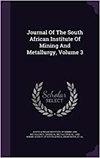南非煤粉灰碱浸法制备钠基沸石及含钾浸出液
IF 0.9
4区 材料科学
Q3 Materials Science
Journal of The South African Institute of Mining and Metallurgy
Pub Date : 2023-05-03
DOI:10.17159/2411-9717/1167/2023
引用次数: 0
摘要
南非用于热处理的饲料煤产生的废煤给人类健康和环境带来了问题,并产生了高昂的处置费用。这些问题需要解决。在实验室回转窑中,将煤粉和煤粉/ K2CO3共混物在700℃下燃烧,得到含有偏高岭石(Al2O3.2SiO2)和伊利石/白云母/正长石非晶态材料的灰烬。将K2O含量为18%的混合灰和K2O含量<1%的煤粉灰,在80℃条件下,以1 M和8 M NaOH为溶剂,料液比为1:5,加水浸出4小时。通过sio2 -、Al(OH)4_和Na+的析出,8 M NaOH浸出灰中形成了17%的钠石(Na8Si6Al6O24(OH)2)。1m NaOH浸出不产钠石。原始灰和浸出灰的x射线荧光分析显示,由于钠石质的形成,铝和硅的溶解效率较低。顺序NaOH浸出的钾溶出率最高,细粒/K2CO3混合灰溶出率为89%,细粒溶出率为59%。在浸出过程中使用更高的NaOH浓度(12-20 M NaOH)可能会增加灰源沸石的浓度。从煤灰中提取的钠石可能用于工业用水净化,或作为分子分离器。该含钾液体可用于化肥生产。本文章由计算机程序翻译,如有差异,请以英文原文为准。
Production of sodium-based zeolites and a potassium-containing leach liquor by alkaline leaching of South African coal fines ash
South African coal discards derived from feed coal for thermoprocesses pose human health and environmental problems and incur high disposal costs. These issues need to be resolved. Coal fines and a coal fines/ K2CO3 blend were combusted at 700°C in a laboratory rotary kiln to produce ashes containing metakaolinite (Al2O3.2SiO2) and illite/muscovite/orthoclase amorphous materials. The blend ash and coal fines ash, containing 18% K2O and <1% K2O respectively, were leached with water and with 1 M and 8 M NaOH at 80°C for 4 hours using a solid to liquid ratio of 1:5. The 8 M NaOH leach yielded 17% sodalite (Na8Si6Al6O24(OH)2) formation through SiO32-, Al(OH)4_, and Na+ precipitation in the leached ashes. The 1 M NaOH leach yielded no sodalite. X-ray fluorescence analysis of the original ashes and leached ashes showed low Al and Si dissolution efficiencies due to the sodalite formation. Sequential NaOH leaching resulted in the highest potassium dissolution efficiency of 89% for the ashes of fines/K2CO3 blend and 59% for the fines. It may be possible to increase the ash-derived zeolite concentration by using even higher NaOH concentrations (12-20 M NaOH) during leaching. Sodalite derived from coal ash could possibly be utilized for water purification in industrial applications, or as molecule separators. The potassium-containing liquid could be used in fertilizer manufacture.
求助全文
通过发布文献求助,成功后即可免费获取论文全文。
去求助
来源期刊
CiteScore
1.50
自引率
11.10%
发文量
61
审稿时长
4-8 weeks
期刊介绍:
The Journal serves as a medium for the publication of high quality scientific papers. This requires that the papers that are submitted for publication are properly and fairly refereed and edited. This process will maintain the high quality of the presentation of the paper and ensure that the technical content is in line with the accepted norms of scientific integrity.

 求助内容:
求助内容: 应助结果提醒方式:
应助结果提醒方式:


